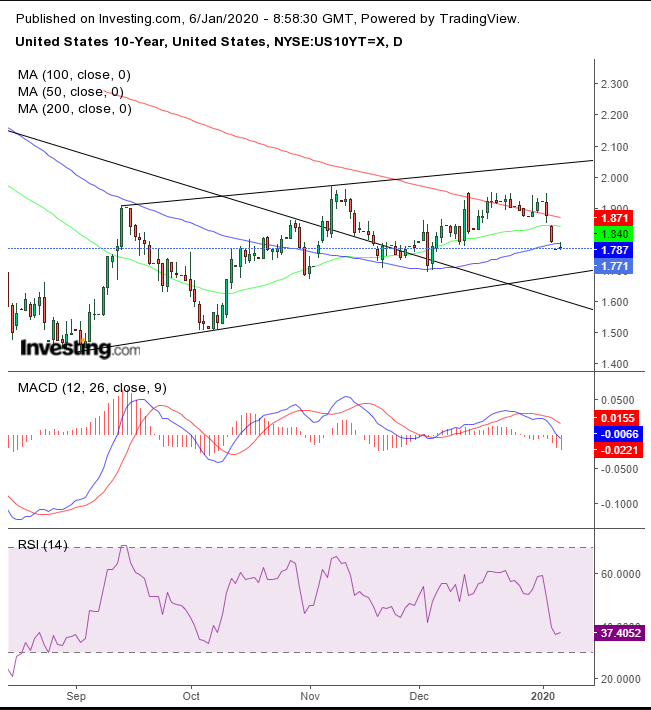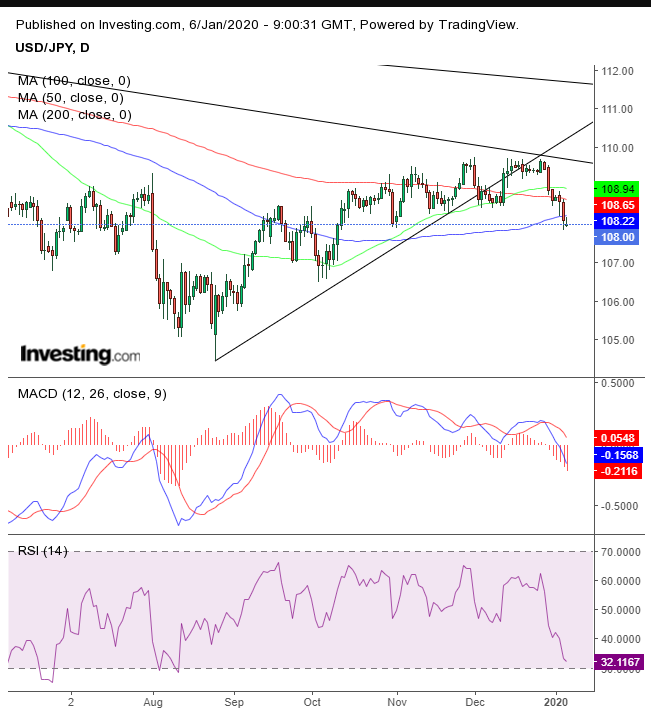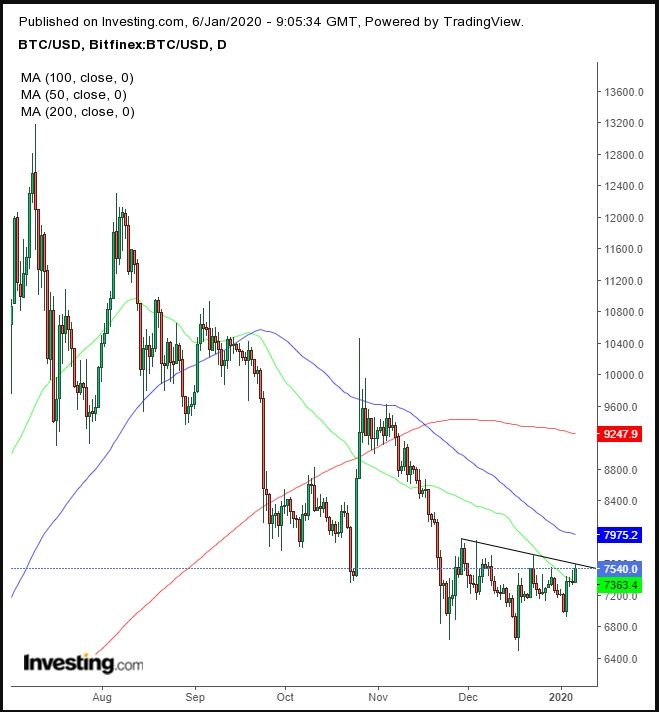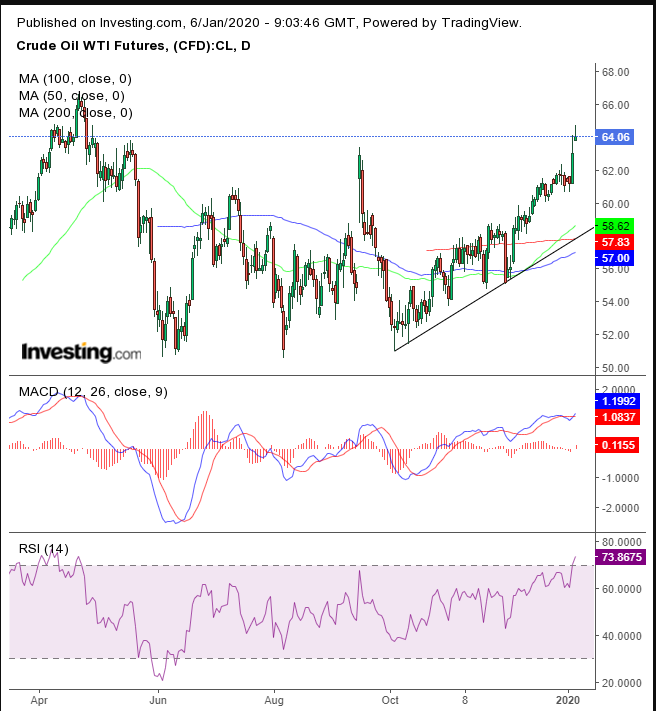- U.S. futures suggest underlying indices will resume their declines from record highs
- Technicals increase chances of an even sharper correction
- Oil jumps but meets resistance
- Bitcoin could be bottoming, potentially joining the safe haven rise
Key Events
Investors have picked up where they left off before the weekend to start the trading week. During this morning's Asian session, all major regional indices—including Japan's Nikkei, South Korea's KOSPI and Hong Kong's Hang Seng—were sold off. U.S. futures contracts, including for the NASDAQ, Dow Jones and S&P 500, were in the red as well.
At the same time, traders have been bidding up oil, in the aftermath of Friday's killing of Iranian Major General Qasem Soleimani. Safe havens resumed their ascent with gold reaching a six-year high.
Global Financial Affairs
Futures on the S&P 500 fell for a second day.

On Friday, the underlying index fell from its most recent uptrend line since Dec. 3, retesting the uptrend line since the Oct. 3 bottom. Both the RSI and MACD increased their turnaround from overbought conditions, with the RSI dipping below its uptrend line since October.
The STOXX Europe 600 Index has also slipped for a second session as news and social media exploded with arguments about whether the U.S. airstrike against the powerful Iranian general will bring peace to the region or ratchet up strife. The situation certainly hasn't been calmed by Iran announcing it will no longer honor its nuclear enrichment limits based on the 2015 pact; at the same time, U.S. President Donald Trump fanned the flames by threatening to bomb 52 Iranian sites if the Middle Eastern country retaliates.
The U.K.'s FTSE 100 slipped more than 0.8% despite a boost in oil giants BP (LON:BP) and Shell (LON:RDSa). U.K. supermarkets were pulled lower following a Time newspaper report that December retail sales were underwhelming.
Major Asian indices all closed lower, with Japan’s Nikkei 225, (-1.91%), losing almost 2%. Australia’s ASX 200 was up slightly, (+0.03%); China’s Shanghai Composite managed to remain steady as well, (-0.01%), after China’s recent stimulus.
U.S. 10-year Treasury yields were also little changed, even after a second consecutive down-gap.

The support for yields might be technical, after a 15-basis point drop in two days. There are bigger issues plaguing yields, as they struggle to break free of the downtrend. These include a dovish Fed, a fattening balance sheet and U.S. debt.

Unlike Treasurys, the JPY extended its climb, after falling below its uptrend line since August. It's been trading along its downtrend line since October 2018 resuming its even longer downtrend.

Gold also continued its advance, having extended its uptrend when it moved past the $1,560 mark. The precious metal has ascended to more than a six-year high.

Bitcoin, set to potentially complete a H&S bottom, rose to $7,540.

Oil pushed past $64, but has since retreated from its daily highs, reaching the April 2019 highs.
Up Ahead
- Eurozone CPI is released on Tuesday.
- Federal Reserve officials Richard Clarida, John Williams, James Bullard and Charles Evans each speak on Thursday.
- The U.S. monthly employment report is due Friday.
Market Moves
Stocks
- Futures on the S&P 500 Index decreased 0.59%.
- The FTSE 100 was down 0.89%.
- The Stoxx Europe 600 Index tumbled 1.03%.
- The MSCI Asia Pacific Index sank 1%.
- The MSCI Emerging Markets Index slumped 1%.
Currencies
- The British pound increased 0.51% to 1.3146.
Bonds
- The yield on 10-year Treasuries dipped one basis point to 1.78%.
- The yield on 2-year Treasuries increased one basis point to 1.54%.
- Germany’s 10-year yield sank two basis points to -0.30%.
- Britain’s 10-year yield fell two basis points to 0.723%.
- Japan’s 10-year yield fell one basis point to -0.02%.
